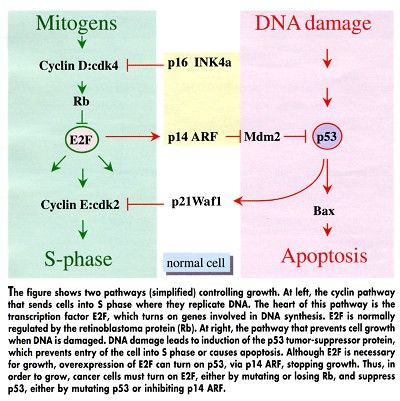Viral Agent ONYX-015 Targets p53-Deficient Cancer Cells
NEW YORK-A phase III clinical trial of the viral therapeutic agent ONYX-015 is underway in patients with recurrent head and neck cancer, based on promising phase II results, Frank McCormick, PhD, said at an American Society of Clinical
NEW YORKA phase III clinical trial of the viral therapeutic agent ONYX-015 is underway in patients with recurrent head and neck cancer, based on promising phase II results, Frank McCormick, PhD, said at an American Society of Clinical Oncology (ASCO) media event on new pathways to targeted treatments. Dr. McCormick is the David A. Wood Chair of Tumor Biology and Cancer Research and director of the Comprehensive Cancer Center and Cancer Research Institute at the University of California, San Francisco.
ONYX-015 was designed to selectively target cancer cells "based on the pathways that are at the heart of the development of cancer," Dr. McCormick said. He founded Onyx Pharmaceuticals in 1992 and was its chief scientific officer until 1996.
In a pathway dominated by growth factors (see Figure below), a failure to regulate the E2F protein can result in uncontrolled cell proliferation. "E2F basically controls entry into S phase of the cell cycle where cells commit to duplicating their DNA," he said. E2F activity is normally regulated by the retinoblastoma (Rb) protein.

In another, parallel pathway, if the p53 protein is absent or defective, the normal barrier to replication of cells with damaged DNA is removed. All cancer cells, he said, have high levels of E2F protein, and many have p53 deficiencies.
"We’ve tried to take advantage of the situations in which you have high E2F and low p53 to actually bring about the death of cancer cells by using viral agents that exploit these differences," Dr. McCormick said. "The principle is based on the fact that when DNA viruses infect cells, they turn on E2F to allow them to enter into S phase and suppress p53 so that the cell doesn’t die during viral replication."
Viruses make two proteins, E1a and E1b, to accomplish this. E1a knocks out the Rb protein, allowing unregulated E2F activity, while E1b binds to and blocks p53 activity. ONYX-015 has been engineered to eliminate E1b, which enables it to invade and destroy p53-deficient tumor cells without harming normal cells with normal p53 activity. "These agents are extremely selective for cancer cells," he said. "They don’t affect normal cells."
Studies have confirmed that the viral agent replicates when injected into a solid tumor. "This cancer cell will definitely die as a result of all this viral load in the cell," Dr. McCormick said, "and the idea is that this cell will then implode and infect neighboring tumor cells. The virus will spread through the tumor, killing its neighbors until eventually it stops because it hits normal tissue."
In a phase II study at M.D. Anderson Cancer Center, he noted, ONYX-015 was administered in combination with cisplatin (Platinol) and fluorouracil (5-FU) to 30 patients with refractory head and neck cancer. The overall response rate was 63% (19 patients), and complete tumor regression was observed in 27% (8 patients). These results, he said, are "significantly better" than historical data from cisplatin and 5-FU trials, where the overall response rate was 35% and complete tumor regression less than 10%.
The phase II findings led to the initiation of the pivotal phase III trial of ONYX-015 in patients with recurrent head and neck cancer. The viral agent plus standard cisplatin/5-FU is being compared with standard chemotherapy alone. Planned enrollment is 300 patients.
A problem identified by the researchers is that tumor cells vary in their expression of the adenovirus receptor. "We’re now thinking of stratifying patients based on the degree of expression of the receptor for this virus to identify a subset that may respond more efficiently," Dr. McCormick said.
Also being considered is pretreatment with rituximab (Rituxan) to dampen immune system response to the virus that might interfere with its action.
2 Commerce Drive
Cranbury, NJ 08512
All rights reserved.